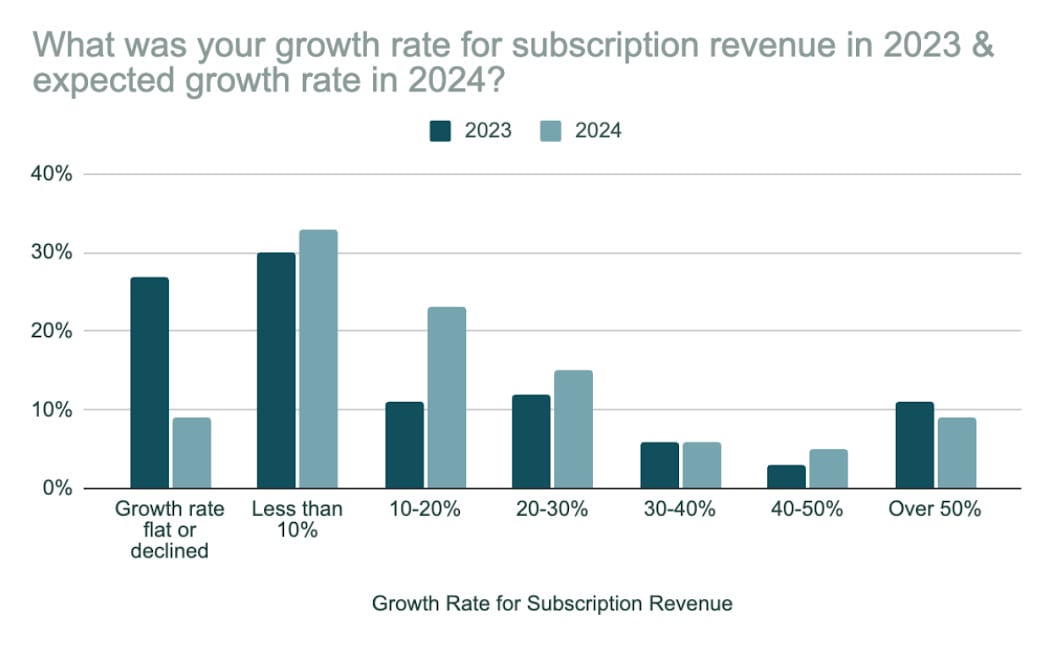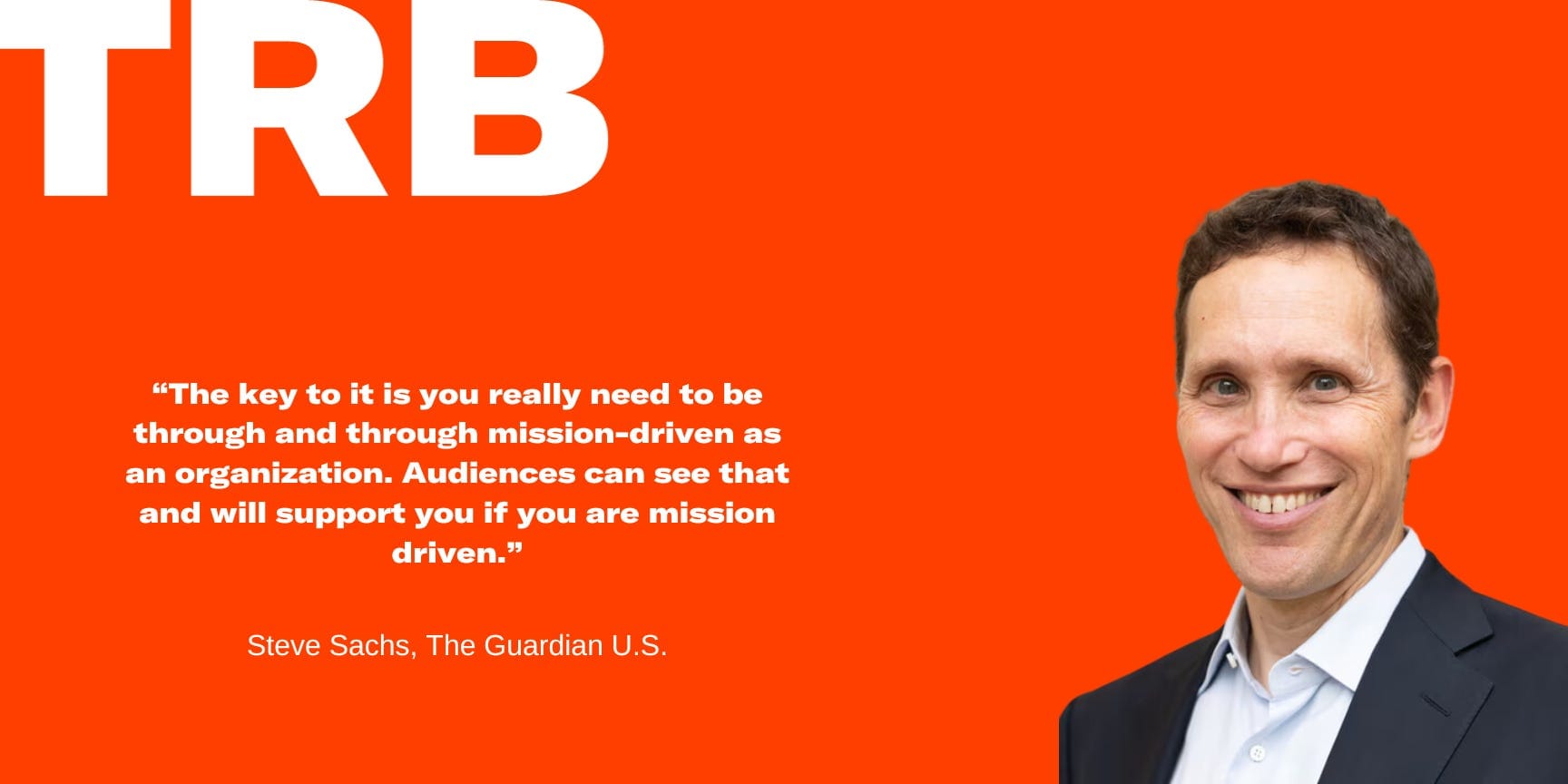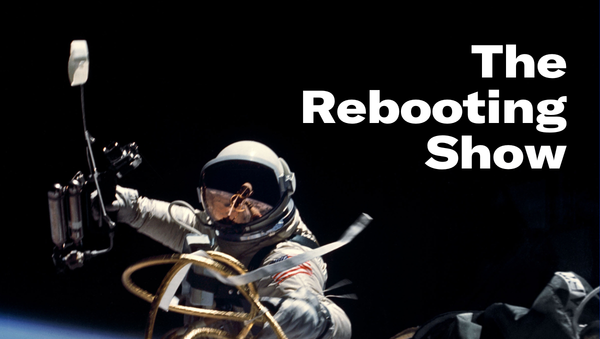The ARPU stage of subscriptions
The numbers-go-up phase is mostly over

Last night, I held a private dinner for the leaders of subscription programs at publishers. A big theme of the evening is that the numbers-go-up era of subscriptions is over, which echoed the findings of The Rebooting’s The State of Publisher Subscriptions report.
Like much else of the ZIRP/pandemic era, these numbers were juiced. Publishers often relied on paid advertising to accumulate large numbers of subscribers from platform advertising that was priced abnormally low. One publisher with a high-priced subscription offering lamented teaching the market their premium brand was valued at $1.99 a month. Most ended up churning anyway. The name of the game now is a back-to-basics focus on ARPU (average revenue per user) instead of the sugar high of growth hacks.
The Rebooting surveyed over 200 publishers last month as part of a research project done in collaboration with customer-data platform BlueConic. It showed that for most publishers the days of hyper growth are over

Pivot is too strong of a word, but the weight of focus is moving for most publishers from subscriber numbers to ARPU. Many publishers are seeing acquisition flag, or become more expensive, leading them to focus instead on squeezing more revenue out of existing subscribers. That’s a theme across many subscriptions, with providers taking the risk of igniting churn.
For many, the scramble to acquire customers meant a lack of a cohesive strategy. There was little connection between subscriptions and advertising. The first-party data collected through ads wasn’t fully put to use to power ad businesses. In its earliest days, subscriptions are often seen as an alternative to advertising rather than the complement it is in most cases.
Publishers often start subscriptions as an e-commerce business, depending on the drip of one-off subscribers. In the business category, matured subscriptions programs require an enterprise offering. But that requires selling the subscriptions. Rarely is the ad sales team the right fit for this, since inevitably subscriptions become a tool to get big ad deals across. I can remember regularly talking to sales about why “taking down the paywall” for Hulu for a week was a losing strategy in the long term. The business lines cannot be separate, but treating subscriptions like mud flaps to toss in to get the car off the lot isn’t the move.
Subscriptions are a forever business. Everything in publishing takes longer that you would think. And building a subscriptions business is the ultramarathon. After early wins, subscriptions become a grind, with optimization tactics coming to the forefront. Strong brands will get you so far. Defector’s annual report is always a great read – I highly encourage all privately owned publishers to follow suit – and it showed how the business has matured in three years. Subscription revenue in 2023 ticked up 4% rather than the 20% recorded a year earlier. The big win was a 90% retention rate when half of Defector’s subscribers came up for renewal.
Most brands have a pre-set number of loyalists who will eventually convert for myriad reasons. The real battle is adding more loyalists. That’s a long term challenge that you can’t solve with a $1 Cyber Monday offer. It requires instead sophisticated onboarding and user journeys.
The Rebooting’s research showed how publishers are largely shifting their focus to the long term while, of course, scrambling to hit short-term revenue and subscriber goals. Churn is rising as a challenge, and a regular theme at the dinner was, of course, the challenge of internal alignment.
As one respondent to our survey put it: “We are losing subscribers faster than we are gaining new ones. Customer service and internal software challenges are mostly to blame.”

Simplify your ad tech stack
It’s no secret a lot of ad tech's issues are born from complexity in the ecosystem. Hashtag Lab's software and services help simplify things for publishers. For example, HTL's featured Chrome extension, HTL Debug, is an easy-to-use tool for inspecting a number of common ad tech services. Install for free today.
The Guardian’s non-profit twist on subscriptions

One sign of the broad maturity of the subscriptions market is the sheer diversity of approaches now taken. Subscriptions were often presented as an all-or-nothing paywall strategy. That soon gave way to meters, freemium models and other tactical paths to what the ultimate goal of subscriptions are: Direct audience revenue.
One of the more interesting twists is voluntary contributions. This NPR-style approach has proven successful for brands like Wikipedia. The Guardian has used voluntary reader contributions as a bulwark of its unique model that blends philanthropy, advertising and voluntary contributions. In the U.S., The Guardian U.S. now generates 57%, or $33 million, of its revenue from voluntary contributions, either one-off or recurring.
On this week’s episode of The Rebooting Show, I spoke with Steve Sachs, The Guardian’s U.S. managing director and veteran of non-profit news models, about this approach and how extensible it is for news publishers. The key to making it work is being mission driven and have that mission to be specific enough to appeal to a group of people For The Guardian, a progressive viewpoint, as well as a global perspective, and commitment to freely available news and information aligns with an audience segment.
Subscribe to The Rebooting Show on Apple, Spotify, or other podcasting platforms. Thanks to House of Kaizen for sponsoring.
The interface shift (con’t)
On this week’s episode of People vs Algorithms, Troy, Alex and I discuss the implications of AI driving a shift in interfaces. My working assumption of AI is that it will be overhyped in the near term, aka the parlor trick era, and underhyped in the long term. One of the biggest impacts will be a shift in computing interfaces.
I have a joke I use about the absurdity of seeing French people use computers. They often appear to treat them with mild to high disdain. And I’ve interpreted that to stem from their admirable embrace of humanism. Computing has often forced humans to think like computers. Search moved the interface closer to regular human interaction, but it was awkward. Natural language search never really worked.
AI will get attached to all manner of new things. See the Humane AI pin. It will be easy to dismiss everything AI as yet another pallet of Silicon Valley snake oil. But that would be a mistake. The interface is changing, and that means distribution will also change. Media is always downstream of distribution. BuzzFeed throwing in the towel on the big-audience, distributed model is both inevitable but noteworthy. Publishing is on the cusp of a profound and painful shift.
Subscribe to People vs Algorithms on Apple, Spotify and other podcasting platforms.
Thanks for reading. Send me your feedback by hitting reply.




